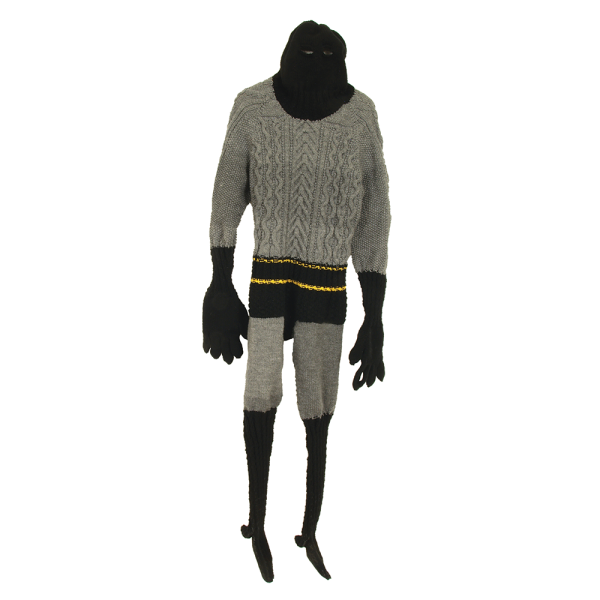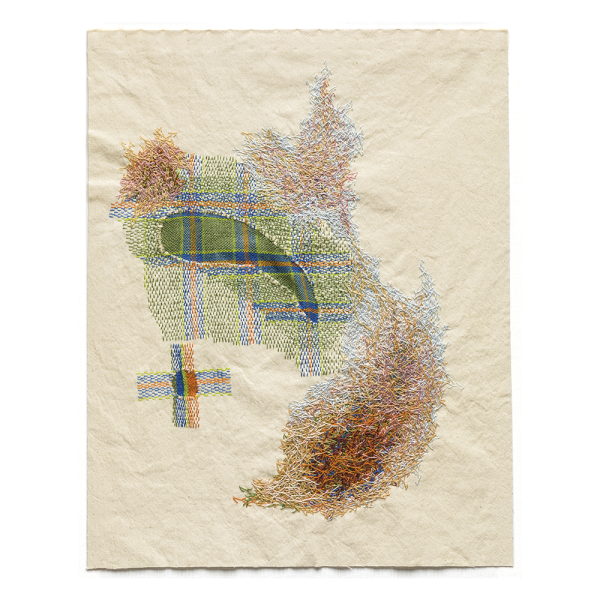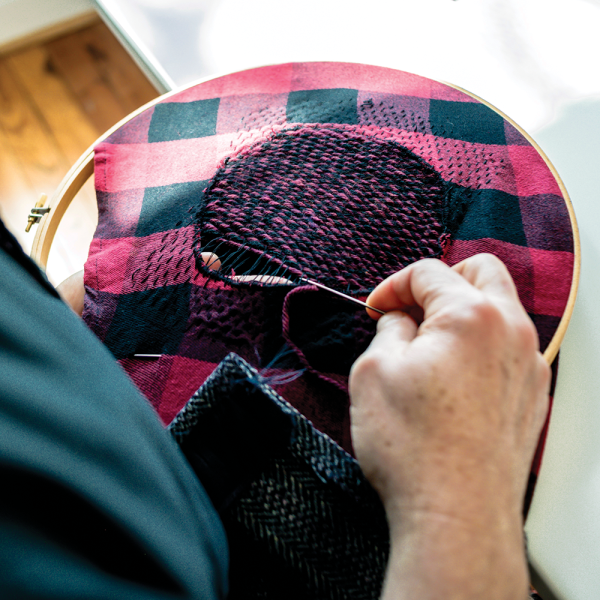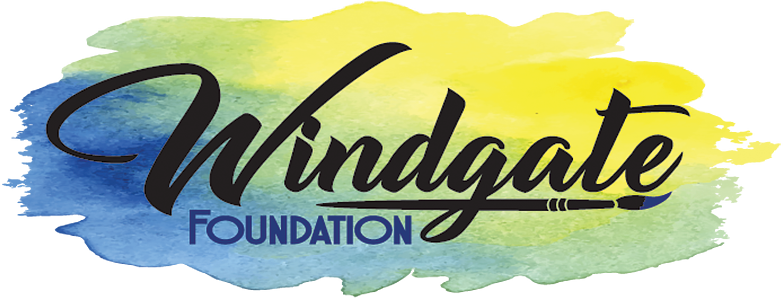Mark Newport
Mark Newport
Since Mark Newport’s grandmother taught him to knit, sew, and embroider—so he and his brother wouldn’t “run around and tear up her house,” he recalls—he has been interested in craft. While studying painting at the Kansas City Art Institute (where he earned a BA), Newport took a fiber arts class and, under 2014 ACC Fellow Jane Lackey’s tutelage, learned not only weaving and dyeing but “how to think through the process and materials I was working with,” he says, “to understand making as a way of thinking and speaking.”
While studying with Anne Wilson at the School of the Art Institute of Chicago (where he earned his MFA), Newport began delving into textile work’s gender politics. “I was drawn to the ways textiles share our most important moments, project our identities, and protect us,” he says. His famous Sweaterman superhero costumes embody all of these concerns. Full-body sweaters he hand-knits with acrylic yarn, Newport’s comic-book renditions, while large and bombastically male, embody the softer aesthetic of embroidery and stitching, with bulging muscles obscured by beads and French knots. The masculine and feminine blur in these works, as well as in his textile portraits of professional athletes, cowboys, and rock stars, dispensing a nuanced expression both provocative and liberating.

Newport’s Sweaterman 6, 2012, hand-knit acrylic and buttons. Photos by Tim Thayer.

Mend 12, 2017, cotton mending and embroidery in muslin.
Moreover, Newport explains, “You can protect by standing in front of somebody—and there’s a vulnerability to trying to protect, so the hero should be vulnerable also—but you can also protect by knitting them a nice warm sweater so they don’t get cold.” The sweaters led to a series of photographic prints, performances, and videos challenging masculinity. Next came mending projects, first resembling patches of skin or landscapes, then using found garments to create works that speak of memory and repair, body and experience, and history.
Newport taught at Cranbrook Academy of Art beginning in 2007, and served as artist-in-residence and head of the Fiber Department; he left in 2023 to focus on his studio practice. His work was included in the Hangzhou Triennial of Fiber Art 2019, China; the 2019 Rijswijk Textile Biennial in the Netherlands; and in group exhibitions at the Textile Museum of Canada, the Mint Museum, and the Museum of Arts and Design. He has had solo exhibitions at the Arizona State University Art Museum, the Cranbrook Art Museum, and the Chicago Cultural Center. He received a Louis Comfort Tiffany Foundation Fellowship, a 2011 Kresge Artist Fellowship, and a Creative Capital Foundation grant. His work is in the collections of the Whitney Museum of American Art, the Renwick Gallery, the Saint Louis Art Museum, and the Racine Art Museum, as well as private collections.

Newport makes fine stitches using an embroidery hoop. Photo by Darrel Ellis.

Reclaim 3, 2022, cotton mending and embroidery in cotton and polyester. Photo by Tim Thayer.
Read more about the other 2024 ACC Awards recipients and honorees here.
Be part of the celebration
Join us Thursday, September 19 as we celebrate and honor individuals who have dedicated their careers to craft—who, through their work as artists, educators, mentors, curators, and advocates, have inspired and informed the field.

